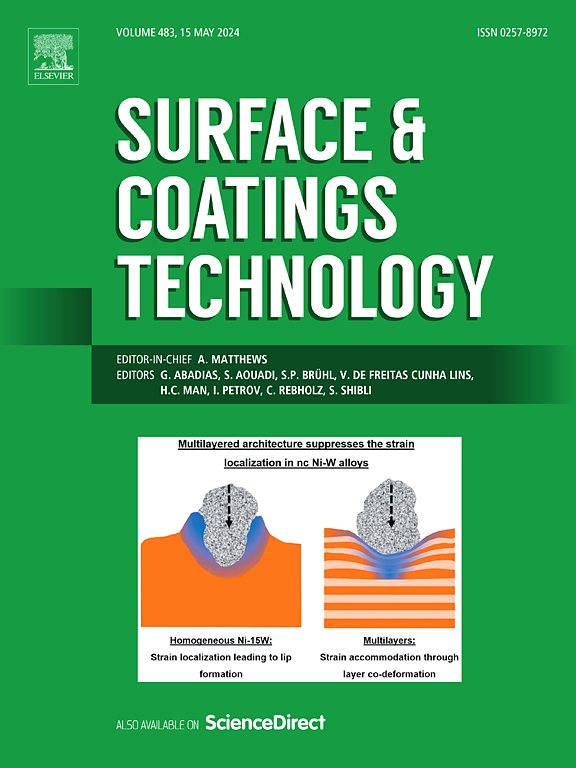Copper powder ultrasonic shot peening and its application in antifouling of Ti alloy
IF 5.3
2区 材料科学
Q1 MATERIALS SCIENCE, COATINGS & FILMS
引用次数: 0
Abstract
This study develops a new shot peening method, i.e., copper powder ultrasonic shot peening, and investigates its antibiofouling effect on commercially pure titanium grade 2 (TA2) alloy in seawater. The results indicate that adding Cu powder during ultrasonic shot peening can form a Cu-containing layer with a thickness 1–2 μm on the surface of TA2 alloy, primarily in the form of nanocrystals. This Cu-containing layer exhibits a 90 % antifouling efficiency against Pseudomonas aeruginosa and an 85 % efficiency against Aspergillus terreus, mainly due to the release of Cu ions during immersion. Electrochemical corrosion test results show that corrosion rate of this anti-fouling layer is two orders of magnitude higher than the substrate alloy, which significantly enhances the release of Cu ions and thereby improving the antifouling capability. Tensile test results show that Cu powder peening similarly improves the mechanical properties of TA2 alloy as conventional peening.
求助全文
约1分钟内获得全文
求助全文
来源期刊

Surface & Coatings Technology
工程技术-材料科学:膜
CiteScore
10.00
自引率
11.10%
发文量
921
审稿时长
19 days
期刊介绍:
Surface and Coatings Technology is an international archival journal publishing scientific papers on significant developments in surface and interface engineering to modify and improve the surface properties of materials for protection in demanding contact conditions or aggressive environments, or for enhanced functional performance. Contributions range from original scientific articles concerned with fundamental and applied aspects of research or direct applications of metallic, inorganic, organic and composite coatings, to invited reviews of current technology in specific areas. Papers submitted to this journal are expected to be in line with the following aspects in processes, and properties/performance:
A. Processes: Physical and chemical vapour deposition techniques, thermal and plasma spraying, surface modification by directed energy techniques such as ion, electron and laser beams, thermo-chemical treatment, wet chemical and electrochemical processes such as plating, sol-gel coating, anodization, plasma electrolytic oxidation, etc., but excluding painting.
B. Properties/performance: friction performance, wear resistance (e.g., abrasion, erosion, fretting, etc), corrosion and oxidation resistance, thermal protection, diffusion resistance, hydrophilicity/hydrophobicity, and properties relevant to smart materials behaviour and enhanced multifunctional performance for environmental, energy and medical applications, but excluding device aspects.
 求助内容:
求助内容: 应助结果提醒方式:
应助结果提醒方式:


